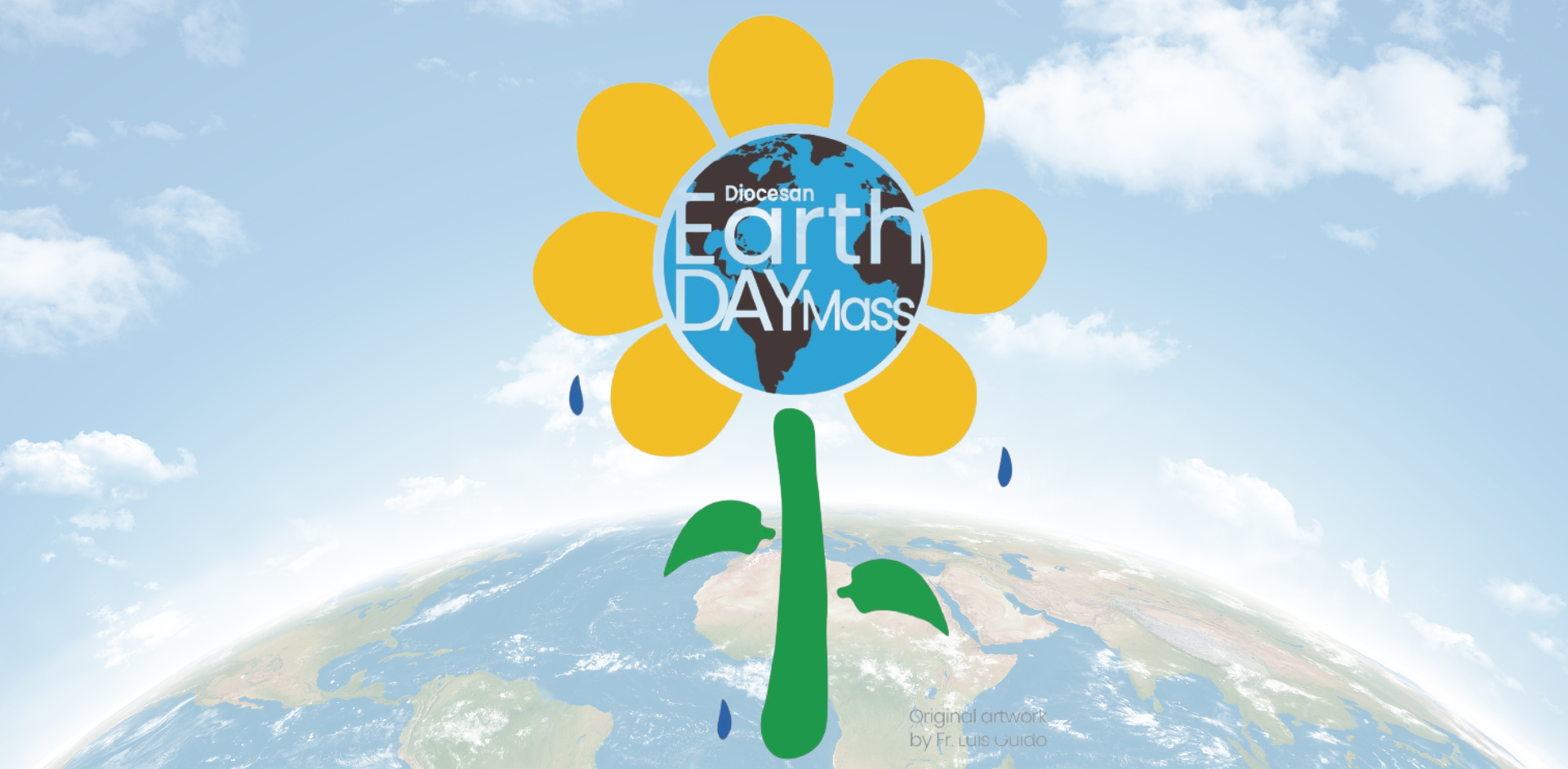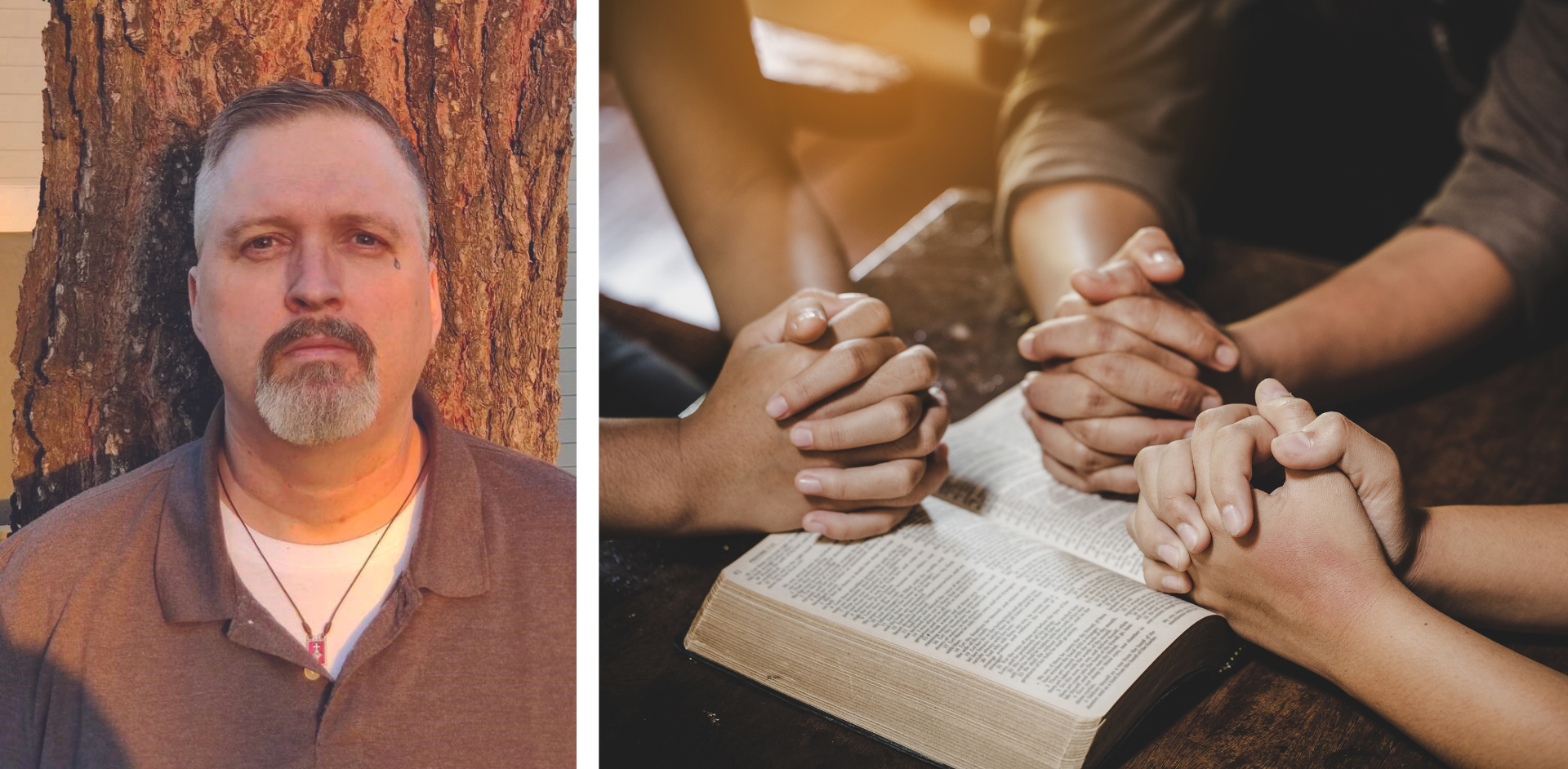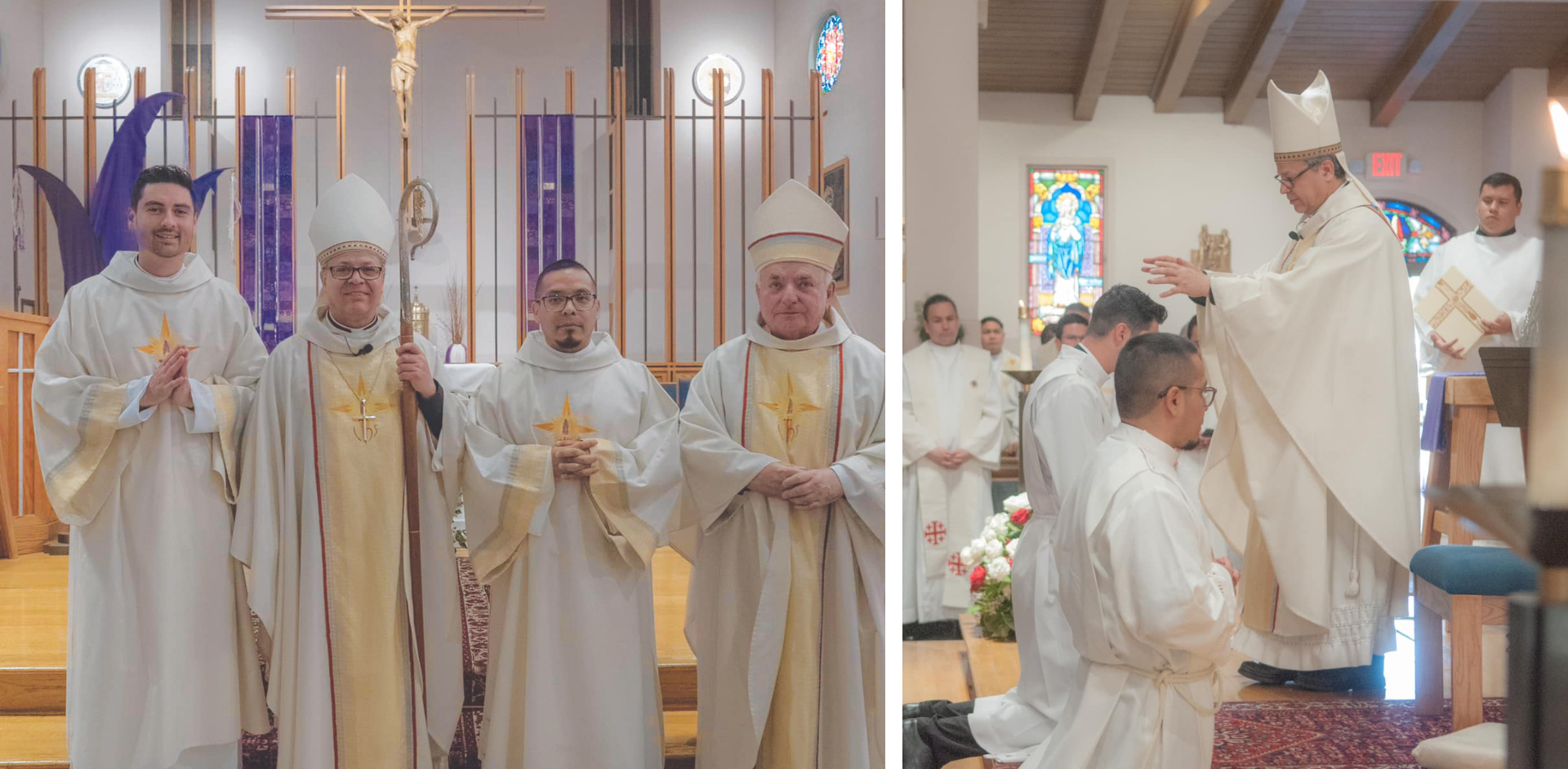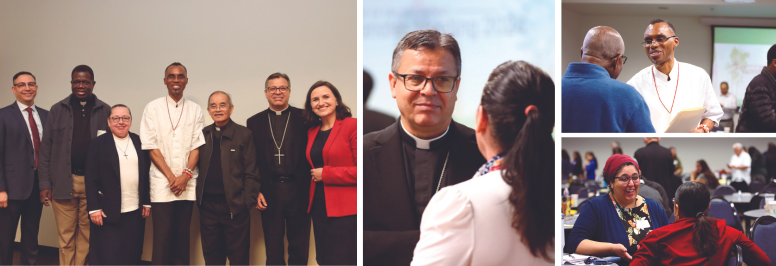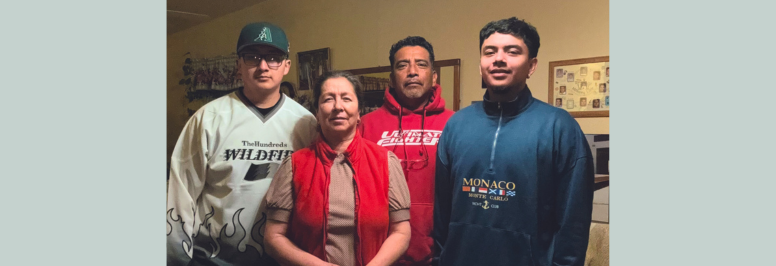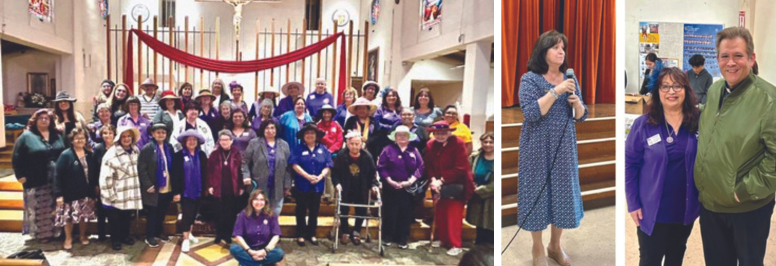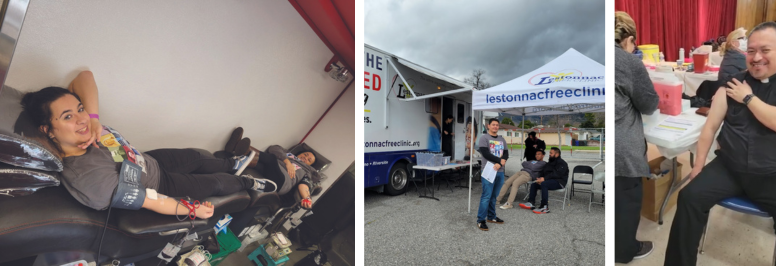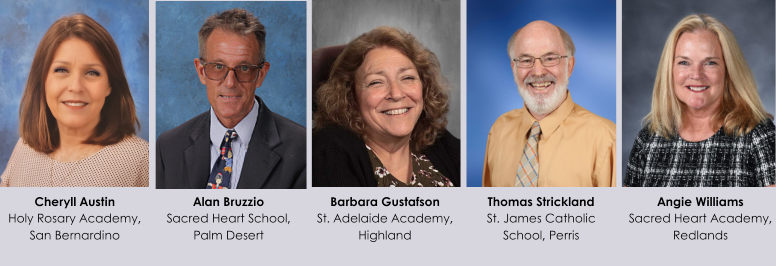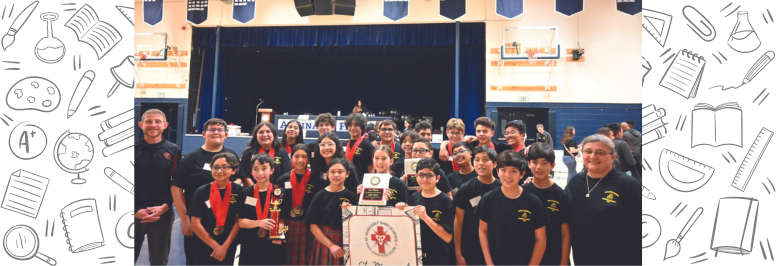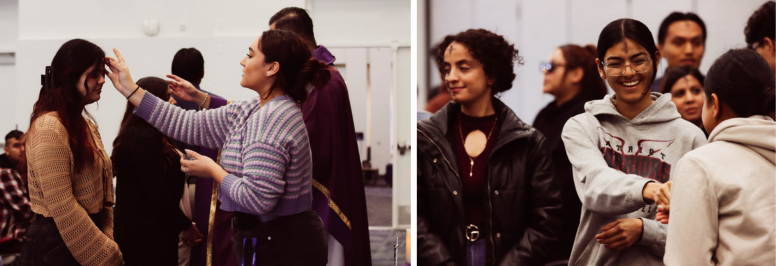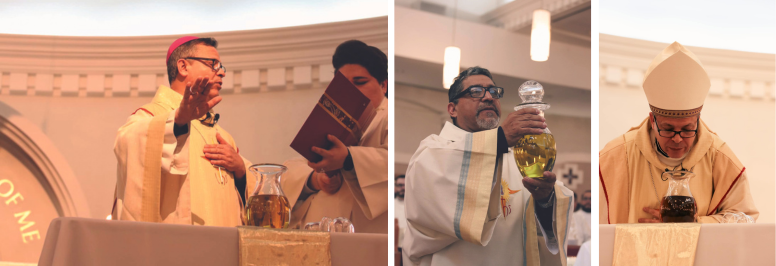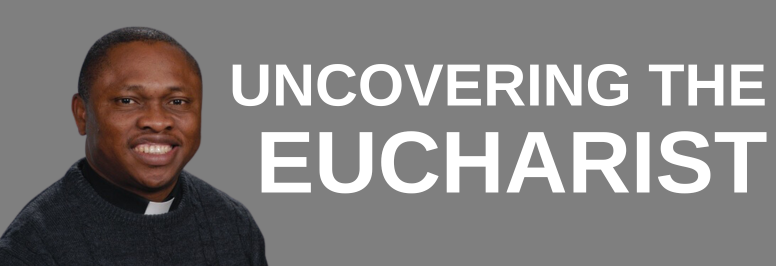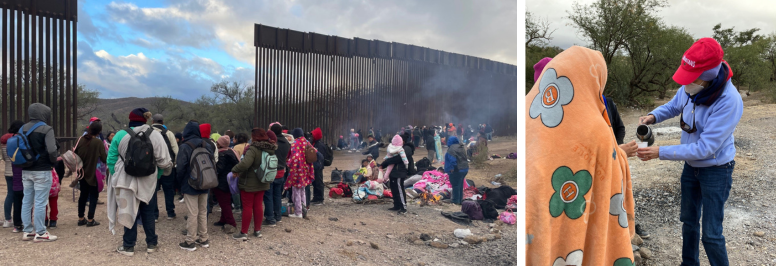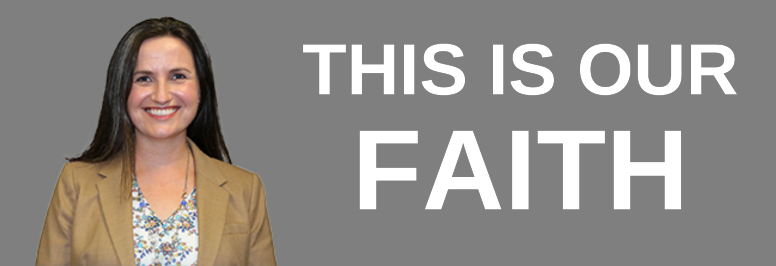My father entered the Bracero Program in 1945, the same year that World War II ended. He was a soldier in Mexico and was trained and on the verge of being deployed to fight alongside U.S. soldiers. They were about to be deployed when they received the news that the war had ended. The Bracero program made it possible for him to immigrate to the U.S. in the early 1960s. This allowed my mother and six children to immigrate. We arrived in the United States in 1968.
Our first home was in Norco, California and our first parish was St. Edward’s in Corona. My mother shares that there were no Masses in Spanish. At that time we were still part of the San Diego Diocese. The Guadalupanas traveled to San Diego to petition the Bishop to institute a Spanish Mass. They experienced what Saint Juan Diego had experienced in the first days of his calling; a meeting with the Bishop that was very difficult. The group was told to come back another day. They were persistent and went a second time prepared to spend whatever time was necessary for an encounter with the Bishop. They finally were able to meet with the Bishop and they were asked to come up with $500 to cover the expenses of establishing a Spanish Mass. There were many fundraisers – Folklorico dances and tamale sales – that made it possible. Then, once the Bishop approved, they met with the priest who was not too accepting of the request. He eventually agreed to set a 7 a.m. Spanish Mass, expecting only a few attendees since it was so early in the morning. The attendance was beyond what anyone expected and eventually a second Spanish Mass on Sunday was warranted.
In 1973, our family moved to Perris, and joined St. James Parish. When we arrived, there were no Spanish Masses at this parish, either. The Spanish Mass was made possible by the work of the parishioners, who agreed to house the priest who would celebrate the Mass and provide his meals. Eventually the parish was able to afford the cost of a priest for Spanish Mass.
After a few years of working in the fields, my father obtained work as a tractor driver on a farm. My mother sought work from the same farmer and she, along with us six children, were hired. I recall that my mother would get up very early in the morning to make breakfast and to make our lunch that she would pack so neatly to feed us all later. We would be in the fields before school in our school clothes, sometimes working with the headlights of the vehicles to light our way. A few hours later my mother would drive us to school; and we were back in the fields after school.
Sometimes in the mornings our hands would hurt from it being so cold and picking the onions. Then came the summer months when it was just too hot – yet there was work to be done. This is where we spent our summer vacations. Because of the poor conditions of working in the fields, eventually Cesar Chavez arrived in the area, led by Our Lady of Guadalupe. I recall that during my early teenage years, I participated in a local march, which eventually resulted in better working conditions and employment benefits.
During my college years in the early 1980s, I worked in the San Bernardino Hispanic Ministry Office. Back then I did not know about the new Diocese. I recall that one day Bishop Barnes, who must have been new in his role of Bishop, walked into at the Hispanic Ministry Office and I did not know who he was. I greeted him not knowing he was the Bishop and I apologized. He answered, “It’s okay, I did not know who you were either.”
My husband, Robert, and I celebrated the Sacrament of Marriage in 1988 at St. James Church. We moved to Highland and attended St Adelaide’s Parish for a few years. We moved back to Perris and St. James, where I served as a catechist, preparing children for their First Holy Communion. We celebrated our 30th wedding anniversary this year. We have two children, a son born in 1990, who helped at St Catherine of Alexandria Parish in Riverside with the Confirmation program (he was awarded Diocesan Guadalupe Award in 2014); and a daughter born in 1992.
We currently reside in Riverside and my husband and I are active ministers in various ministries at St Catherine’s. I completed and received my Coordinator of Ministry Formation Program (CMFP) certificate in June 2018; and in October will begin Advanced Liturgy specialization. I was selected and attended as a delegate for V Encuentro Regional and National gatherings; proudly following in my mother’s footsteps, as she was a delegate for II Encuentro. By attending V Encuentro, and hearing the needs of the other dioceses, I learned that Bishop Barnes has done much for our Diocese, and we are a model diocese in many matters.
I am freshly retired after working at the County of Riverside for 33 years and praying to God to guide me and open the door to where he wants me to serve Him. He is opening many doors.
Pam Lucero and her family are parishioners of St. Catherine of Alexandria Church in Riverside.



